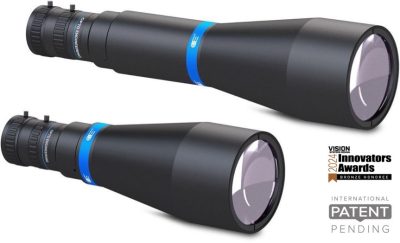HC series
Hypercentric lenses for 360° inspection of the inner sides and bottom of cavities
Key advantages
- Perfect focusing of hollow objects with just one camera
For precise and high-resolution simultaneous imaging of the inner walls and bottom of cavities - Cavity inspection from the outside
No need to insert an optical probe into the object - Very high field depth and flexibility
Cavities featuring different shapes and dimensions can be easily imaged by the same lens - Wide viewing angle, manual focus adjustment and variable iris
- Ideal for the inspection of bottles and hollow objects
HC series features hypercentric lenses for sensors up to 1.1” designed for the simultaneous inspection of the inner sides and bottom surfaces of hollow cylindrical samples, such as bottles, cans, vials, containers, pipes and bores.
HC lenses image the inside of cavities from the outside thanks to the special optical path of the rays passing through bottlenecks and narrow openings. This unique optical design allows to fully inspect the inside surfaces of cavities without the need to rotate the sample or use complex multi-camera systems. In addition, HC lenses feature variable iris for maximum flexibility and a wide viewing angle to clearly image the features of interest.
HC lenses are available in two different versions:
- SIDE & BOTTOM hypercentric lenses (i.e., HCSIxxx models) are designed for the inspection of both the bottom and the inner walls of cavities in perfect focus;
- BOTTOM hypercentric lenses (i.e., HCBIxxx models) have been developed to specifically inspect the bottom surface of hollow objects at high resolution. By changing the f/N of the lens, part of the side wall can also be inspected in focus.
Hypercentric lenses innovative optical design has been optimized to image inner defects in containers, specifically for the beverage, pharma and cosmetics industries but also to generally inspect hollow objects in many other industry sectors.
Notes
- The minimum field of view can be achieved by using about 2 mm of back focal spacers betweem the camera and the objective. Even smaller field of views can be achieved by using extension tubes.
- Working distance: distance between the front end of the mechanics and the object.
- Distance between the front end of the mechanics and the point where all the optical rays coming from the object converge (entrance pupil).
- Measured from the front end of the mechanics to the camera flange.







